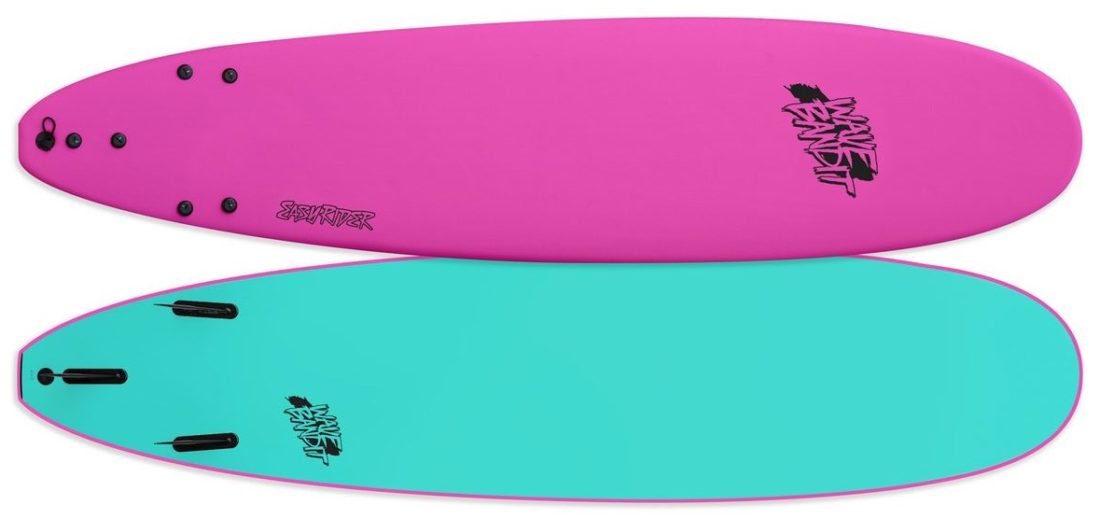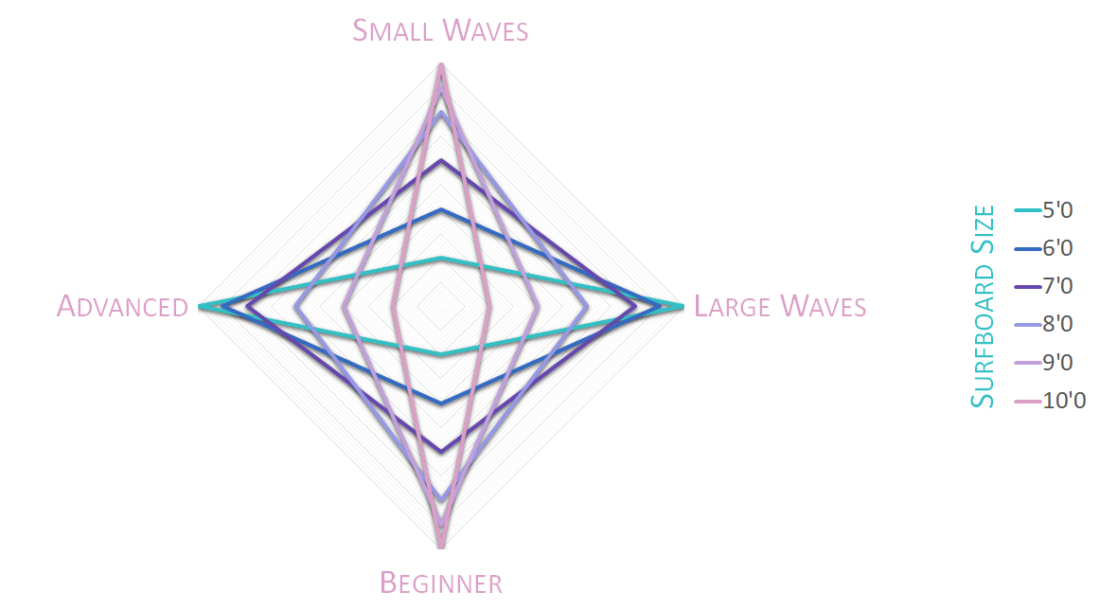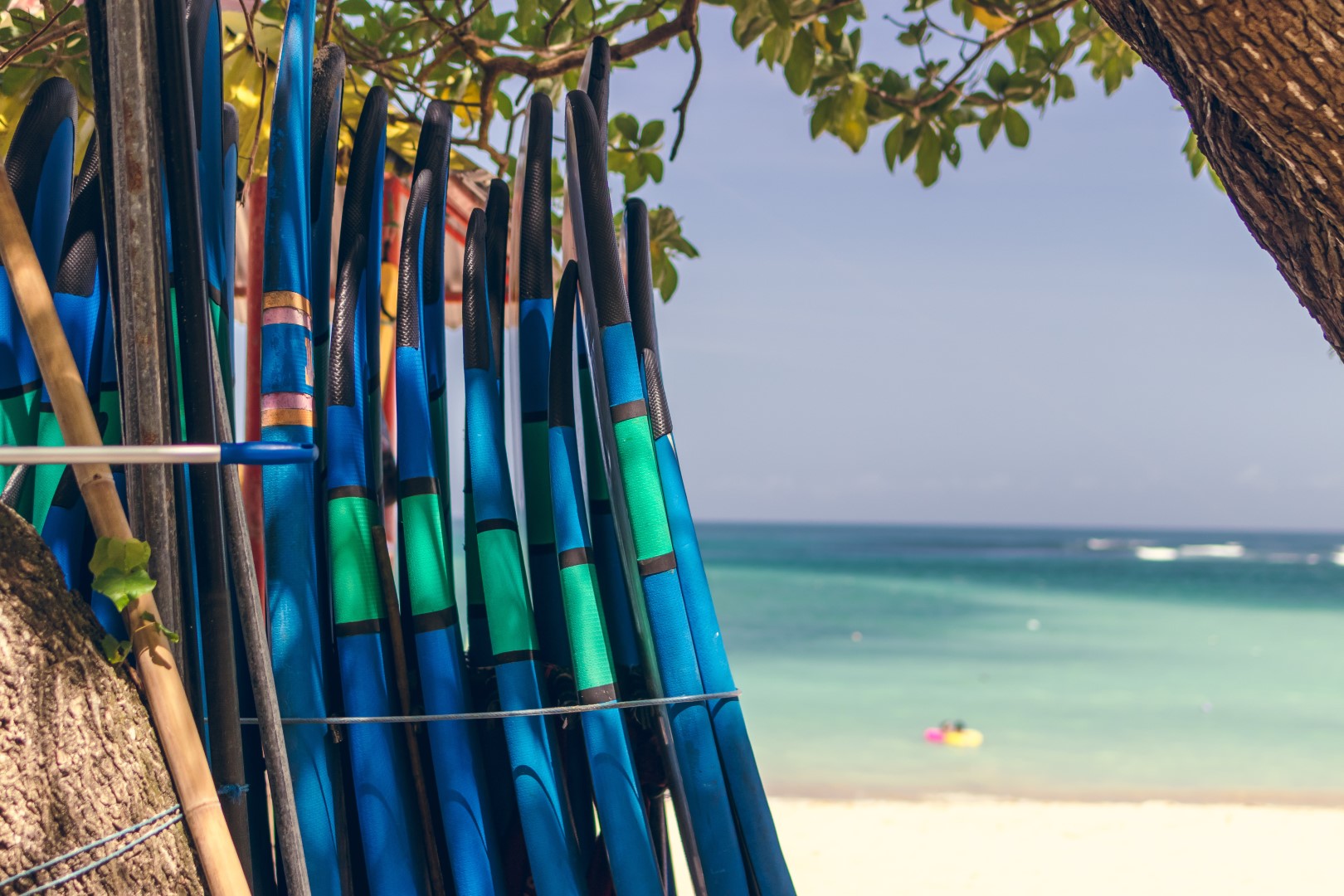What Size Surfboard Should You Buy?
There are many decisions you need to make when buying a soft top surfboard and size is an important one. Most surfboards list their size dimensions as Length x Width x Thickness.
Before we get ahead of ourselves, there are a few terms you need to familiarise yourself with.

Length
This one is pretty self-explanatory, but also the most important. Soft top surfboards are typically listed by length, and other dimensions are sometimes not published. When choosing the size of a softboard, it is really the length that we are choosing.
Shape
Surfboards come in all kinds of shapes, and this has a huge impact on how the surfboard performs. Part of this is due to the relationship with volume, but also to do with where the surfboard is wide and where it is skinny. Think of a typical shortboard with a pointy nose, compared to a longboard with a round nose.
Volume
Volume is measured in Litres. You cannot accurately calculate volume with surfboard dimensions alone, but some assumptions can be made when comparing similarly shaped boards with known dimensions. Volume is often referenced as the most important factor in surfboard size, however soft top surfboards typically have much higher volume than fiberglass surfboards so the impact of this measurement is not as significant compared to lower volume fiberglass surfboards.
For other surfboard terms check out our glossary.
Shortboard

Shortboards (less than 7’0 long) are suitable for intermediate and advanced surfers only. That is a bold statement, but I stand by it. As a beginner, you will have more fun, catch more waves, and progress a lot faster on a longboard.
Due to the advanced nature of shortboards, a generic size guide is not applicable. Every shortboard will have different characteristics, and you may wish to surf the same board design of different lengths in different conditions.
For instance, I often surf a very small 4’10 soft top shortboard in small waves or shore breaks as this board is super light, fast, and I can have a lot of fun. I would not choose to take this board out in waves over 3ft however as I prefer a longer board in these conditions for more performance.
If you are interested, please check out our soft top shortboard reviews.
Longboard

When buying a soft top longboard, you should first choose the board, then select the correct size of that model. Check out our soft top longboard reviews.
Best Surfboard For Improving Your Surfing
Best Beginner Surfboard
Best Longboard For Intermediate Surfers
Surfboards of the same model will roughly scale the shape and volume for different length boards as appropriate. This does not mean a board that is 10% longer will be exactly 10% thicker, but it will be proportionally thicker whilst retaining similar performance characteristics. For this reason, size and length are really interchangeable terms once you have selected a surfboard model.
The longer the board, the more volume it will have, and therefore the easier it will be to paddle and catch waves. If you are looking for a beginner surfboard, then you will want to buy at the longer end of the scale, or if you are looking for a performance longboard or a board to progress then you may buy at the shorter end.
The shape, thickness and therefore the volume of the board you have chosen will have an impact on your decision of what size is most suitable. Whilst the 8’0 version of one board might be your preference, 7’6 could be a more suitable size in a wider board.
My recommendation is instead of looking for a surfboard of a certain length, that you decide on what you want from a surfboard and then choose a surfboard model based on its shape and characteristics, then finally select length.
Soft Top Longboard Size Guide
Rider Weight
| Surfboard Length | Beginner Board | Progression Board |
|---|---|---|
| 7’0 | < 145lbs (65kg) | < 155lbs (70kg) |
| 8’0 | < 165lbs (75kg) | < 175lbs (80kg) |
| 9’0 | < 185lbs (85kg) | > 200lbs (90kg) |
| 10’0 | > 185lbs (85kg) |
Summary
The performance characteristics are not drastically different if you move up or down one size for instance, an 8ft board will perform quite similar to a 9ft board. As you make larger size changes, the characteristics of the board will change more noticeably
A general rule of thumb is that for smaller waves you want a larger board. As learning is done on small waves, this also correlates with buying a larger board when you are learning to surf

It is worth noting that you can definitely surf a short surfboard in small waves, and a long surfboard in large waves. The more suitable your board size is for your ability and the conditions you ride in however, the more waves you will be able to catch.



